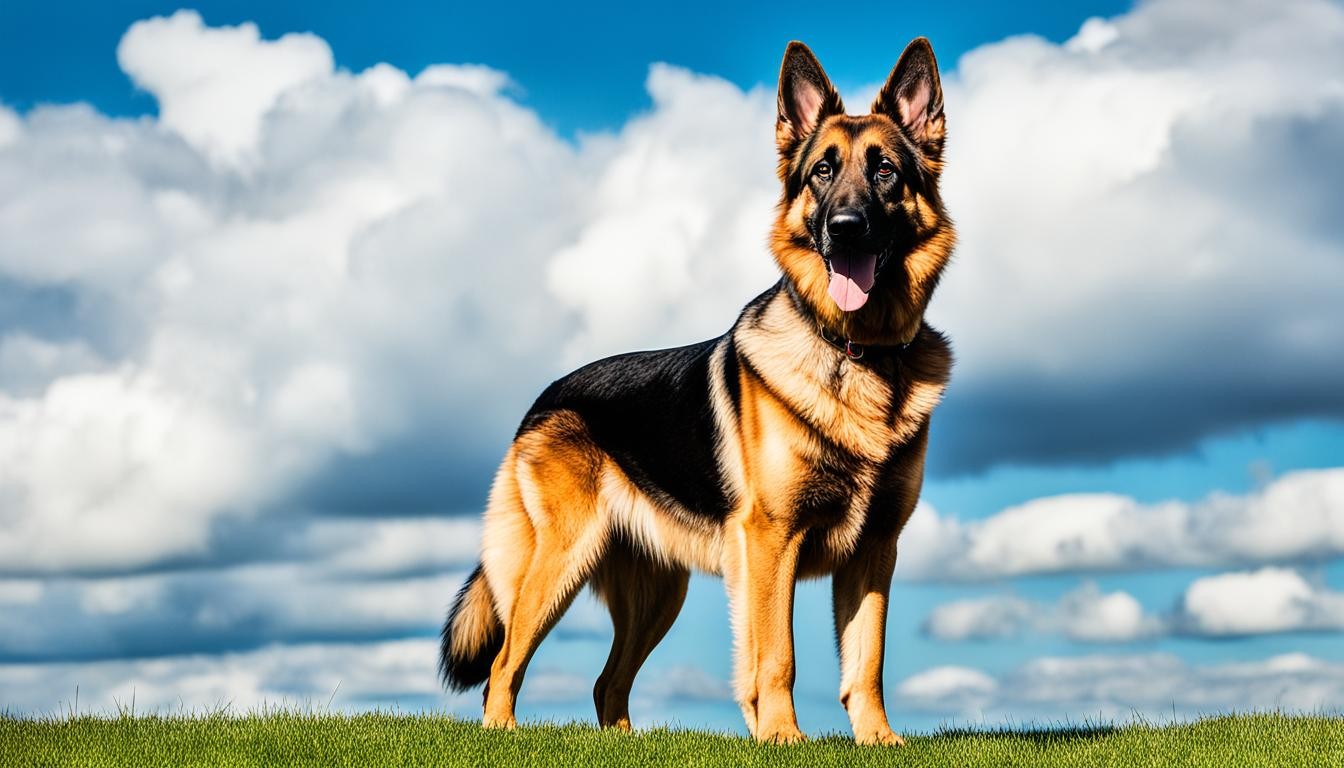
The sable coat pattern represents the most dominant and historically significant coloration in German Shepherd Dogs (GSDs). First documented through Horand von Grafrath, the breed's founding sire, sable GSDs showcase a distinctive "agouti" pattern where individual hair strands feature lighter bases with darker tips - typically black overlaying red, tan, or gray. This wolf-like appearance stems from working bloodlines, particularly the DDR/East German lineage. While less common than the classic black and tan variety, sable remains a recognized and sought-after color within the breed standard, especially prevalent among working and performance lines.
Sable German Shepherd Genetics and Coat Patterns
Dominant Color Gene Expression
The sable coloring is genetically dominant in German Shepherds, making it the most foundational color pattern in the breed. Each hair shaft in a sable GSD displays an agouti pattern with multiple color bands - typically a lighter base (tan/red/gray) with black tips, creating a distinctive wolf-like appearance. This pattern requires at least one sable parent to be produced, as two black and tan dogs cannot produce sable puppies. A homozygous "dominant sable" carries two sable genes and will only produce sable offspring regardless of mate color.
DDR Bloodline Connection
The sable coloring is strongly associated with East German (DDR) bloodlines developed during the Cold War era. These working lines were specifically bred for military and police work, with the sable coat being prevalent among DDR dogs. While sable GSDs exist across different bloodlines, the DDR connection helped establish their reputation as exceptional working dogs. The coloring is less common in show lines, particularly West German show lines where black and red is preferred.
What is a Sable German Shepherd? Characteristics and Genetics
Historical Origins and Significance
The sable German Shepherd holds a distinctive place in breed history as the original GSD color variant. The very first registered German Shepherd was a sable dog named Horand von Grafrath, discovered by breed founder Max von Stephanitz at a dog show. After purchasing this impressive sable specimen, von Stephanitz established the world's first German Shepherd club and began selectively breeding to fix the traits he admired, setting the foundation for the modern breed.
Color Variations and Physical Traits
While the previous section covered sable genetics, this section focuses on the specific color variations. Sable German Shepherds display remarkable diversity in their coat coloring, ranging from light gray or tan to darker red, brown or black shades. The distinctive feature is their wolf-like appearance created by the unique color pattern of each hair shaft - having lighter roots with black-tipped ends that create an ombre effect. This produces various patterns that can appear similar to wild canids, though richer dark pigmentation is generally preferred in breeding programs. The color itself does not affect the dog's health or capabilities, but rather serves as a visual marker of their working-line heritage.
Sable German Shepherd Training and Care Requirements
Exercise and Mental Stimulation Needs
While previous sections focused on genetics and physical traits, this section examines the unique activity requirements of sable GSDs. These dogs need approximately two hours of daily exercise to maintain optimal physical and mental health. They excel at activities that engage their herding instincts, like gathering toys or herding balls. Their high intelligence and "spidey senses" make them particularly alert and ready to learn, requiring consistent mental enrichment through training and problem-solving activities.
Special Considerations for Working Lines
Sable German Shepherds, especially those from DDR bloodlines, display notably intense and active personalities compared to other color variants. As working dogs, they require experienced handlers who can provide proper training and socialization from puppyhood. Their high drive and intelligence make them excellent candidates for police work, military service, and Schutzhund competitions. However, without adequate stimulation, they may develop undesirable behaviors due to boredom and frustration. Training should focus on positive reinforcement methods, as these dogs are naturally reward-oriented and respond best to patient, consistent guidance.
Conclusion
Sable German Shepherds represent the original and genetically dominant color pattern in the breed, characterized by their distinctive wolf-like appearance with multi-banded hair shafts featuring lighter bases and darker tips. This coloring is strongly associated with East German (DDR) working lines and traces back to the breed's foundation sire, Horand von Grafrath. The research reveals that sable coloring requires at least one sable parent and shows considerable variation in shades, from light gray to dark black-tipped patterns.
Beyond their unique genetics and appearance, sable German Shepherds, particularly those from working lines, demonstrate high intelligence and intense drive that requires specialized care. These dogs need approximately two hours of daily exercise and consistent mental stimulation to thrive. Their working-line heritage makes them excellent candidates for service roles, though this also means they require experienced handlers who can provide appropriate training and enrichment. For potential owners, understanding these distinct characteristics and care requirements is essential for successfully raising and working with a sable German Shepherd.